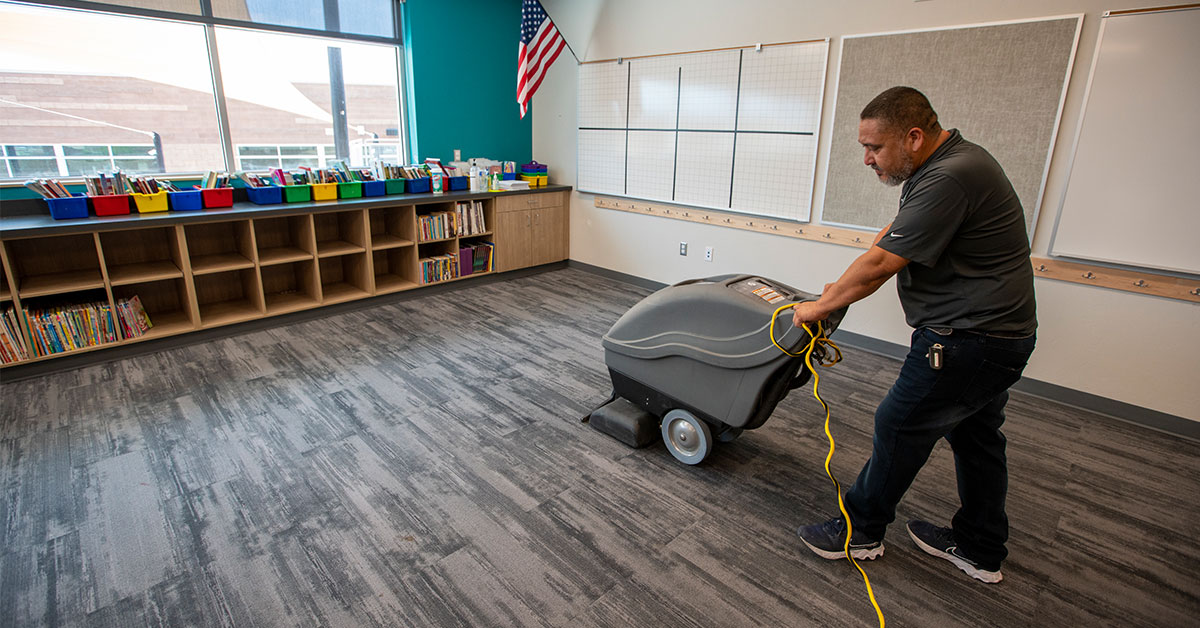
Classroom Cleaning: How Dirty Classrooms Could Be Affecting Your Students & Teachers
In an article titled “Reimagining the Modern Classroom”, Carol Burris, executive director of the Network for Public Education, states that “students and teachers need clean, roomy, well-ventilated and well-lit spaces for teaching and learning.” In other words, having a dark, dirty and poorly ventilated school does more than make for a bad first impression for potential students and parents. Poor classroom cleaning habits can drastically affect student achievement and teacher morale. Studies back this up.
“With respect to students, school facilities affect health, behavior, engagement, learning, and growth in achievement,” the Penn State Center for Evaluation and Education Policy Analysis found. “Thus, researchers generally conclude that without adequate facilities and resources, it is extremely difficult to serve large numbers of children with complex needs.”
Despite this, U.S. school facilities received a D+ in the most recent Infrastructure Report Card, released by the American Society of Civil Engineers in 2021. The report also found that 24 percent of public school buildings are in poor or fair condition. Wondering how the condition of your school could be impacting your students and teachers? Read on for our top 3 concerns that come with poor learning environments.
-
- Increased Absenteeism & Sickness
Ever heard of “sick building syndrome”? It’s real and can affect attendance at your school. Poor air quality can have a huge impact on absenteeism, especially on students with asthma, and poor ventilation allows “bacteria, viruses, and allergens that contribute to childhood disease” to circulate, according to the Penn State paper.
Researchers at Lawrence Berkeley Labs “noted an increase of 50 percent to 370 percent in the incidence of respiratory illness in spaces with low ventilation rates, as are commonly found in schools, compared to spaces meeting industry-accepted standards,” according to the 2016 State of Our Schools report from the 21st Century School Fund. SSC uses cleaners that have been shown to help decrease absenteeism rates significantly.
Clean dirty areas, improve ventilation in all classrooms by leaving windows and doors opened when possible, and clear out any holes, leaks or mold that can be contaminating the air.
-
- Reduced Morale & Productivity
Lighting plays a major role in both morale and productivity. According to a Penn State paper, “Research has shown that not only does classroom lighting boost the morale of teachers and students, (but) appropriate amounts of natural lighting also reduces off-task behavior and improves test scores”.
Poor working conditions can lead to low morale in not only students but also teachers. As a result, your school may see increased teacher turnover. 19% percent of teachers who left the profession cited “dissatisfaction with working conditions,” according to a Learning Policy Institute study. Teacher turnover is costly to both your students and your budget. It hurts student achievement and leads to shortages, and it can cost up to $21,000 to replace a new teacher in an urban school district, according to Education Week.
-
- Lower Test Scores
In addition to productivity, poor lighting could directly affect test scores. A study in California found that students scored as much as 25 percent higher on standardized tests in classrooms with more natural light. In an earlier study, students with “the most exposure to natural daylight progressed 20 percent faster in math and 26 percent faster in reading than students who were taught in environments with the least amount of natural light”.
Having an efficient and properly designed custodial and preventive maintenance program makes it possible to create and maintain a clean, comfortable, pleasing atmosphere conducive to learning. Get your school clean and healthy during winter break so students can have a better learning experience when they come back from the holidays.
Check out our Resource Center for tips on how to keep your learning environments in the best shape for students and staff.